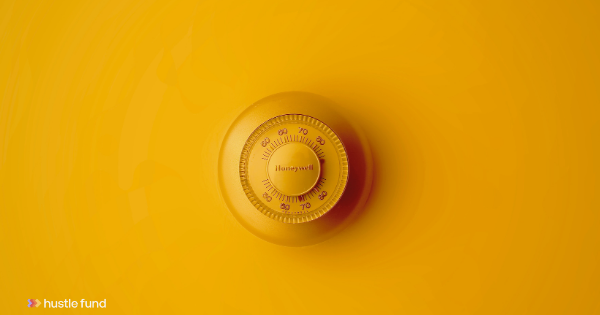How fundraising stages work
Raising money can be pretty confusing if you don't come from the entrepreneur/VC world. When I first joined Hustle Fund, I had a lot of questions:
- What's the difference between pre-seed, seed, and series A rounds?
- Why do some people call post-seed the “mango seed stage”?
- Did someone really pitch Eric to lead their avocado seed stage? (true story)
Luckily, Eric and Janel break down the different fundraising stages that startups go through.
Watch the full episode of Uncapped Notes or read the written version below.
Pre-seed
The pre-seed stage is usually the first round of funding that founders raise. People may also call it angel round or friends and family round.
Teams at the pre-seed stage are just getting started. This is when founders quit their jobs to go full-time on their startup, or are planning to jump ship soon.
You may have a grand vision of where your business will be. You might even have a minimum viable product (MVP).
You probably don’t have many (or any) real users or data yet. So investors who put in money are simply betting on your team and your vision.
These rounds are typically small. Like, a few hundred thousand dollars. This may include money from your family, friends, angel investors, or even your dentist.
The goal at this stage is to get enough money to go full-time on your startup and start building your product.
Seed
The seed stage typically happens when you’ve shipped your MVP and see real feedback from real users. You could have a consumer app with hundreds or thousands of users. Or you may have a B2B business with a few enterprise customers in your pilot.
This is the stage where you're making solid traction. You're validating the market demand for your product.
Seed rounds are quite large compared to pre-seed rounds, typically ranging from $500K to $3M.
The goal of this stage is to generate traction to find product-market fit.
🔥Hot tip: Founders at the seed stage (and beyond) are at the sweet spot to attend Hustlers' Retreat later this year.
Post-seed
The post-seed stage is a gray area between seed and series A. Kinda like the awkward teenager phase.
You’ve no longer a kid (seed stage). But you may have acne, a cracking voice, and soooo much to learn before being considered an adult (that’s series A).

Seed-stage companies have made major progress but not quite enough to raise a Series A.
Before you raise a Series A, you may need to prove specific metrics like retention and engagement. Or hit certain revenue milestones, or acquire a certain number of users.
You may wonder, “What are the specific metrics that investors look for in Series A?” Well, it depends. This is an important session that Elizabeth Yin (General Partner of Hustle Fund) will cover in-depth at Hustlers’ Retreat.
Post-seed rounds can range from $1M to $5M. You may hear people call this round the “mango seed stage” or “avocado seed stage”. 🥑
They can be an extension of your seed round with many of your previous investors, or separate rounds with new investors.
The goal at this stage is to provide more evidence/data that your company is ready for a big series A round.
Series A
You know you’re ready to raise your series A when you can prove you’ve found product-market fit and that you can scale your business.
You have strong evidence that you can capture a decent share of the huge market. You’ve shown that you can recruit A-players and have a solid team that can execute your vision.
You're ready to scale. 😎
Series A rounds are much more substantial than previous rounds, ranging from $8M to $15M. They typically involve a lead investor who puts half or more of the money into the round.
This stage is also when you form a board of directors, to whom you'll report quarterly on your progress.
Final thoughts
There are more stages like Series B, C, D, etc. but those rounds have strict/clear guidelines. Plus if you're reading this, you're probably not there quite yet. So don't sweat it. 🙂
Focus on where you're at right now. And do what you need to do at each stage to progress yourself forward.
Do fundraising rounds make more sense now? Reply back if you have any questions and we'll help you out.
P.S. Yes, I know I still look the same 10 years later. 😅











